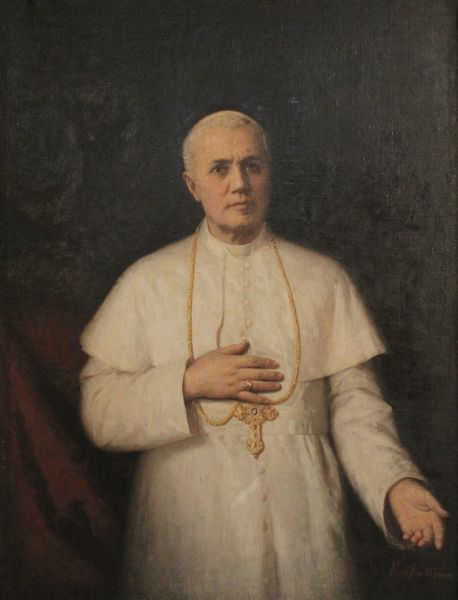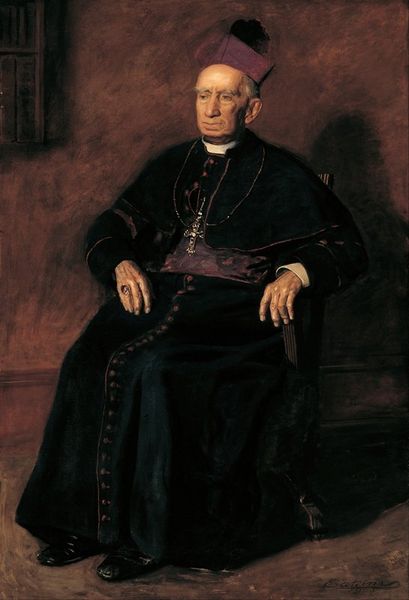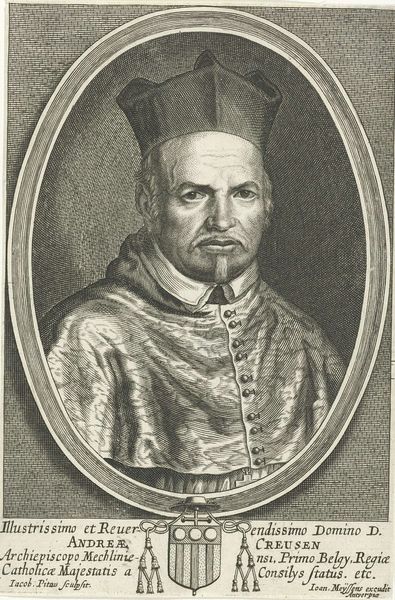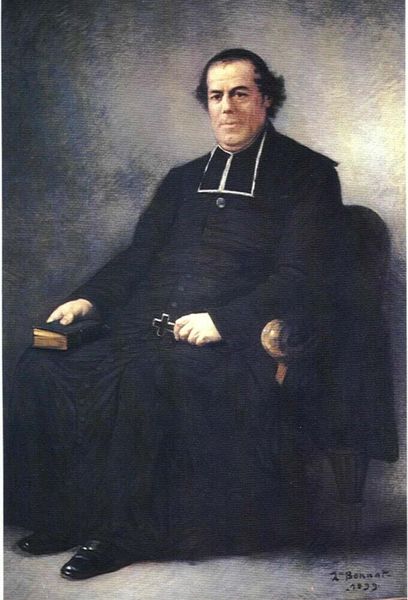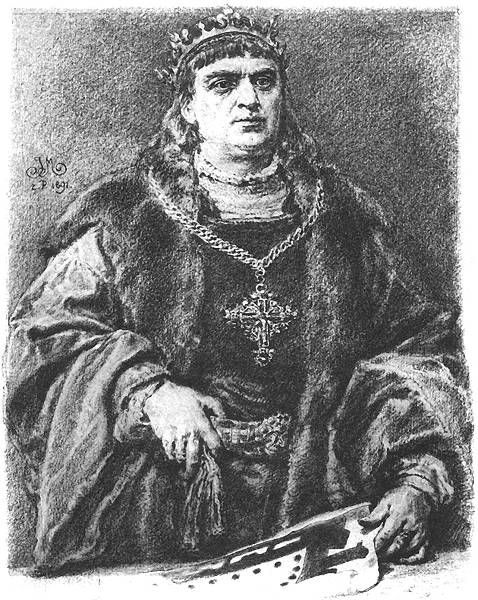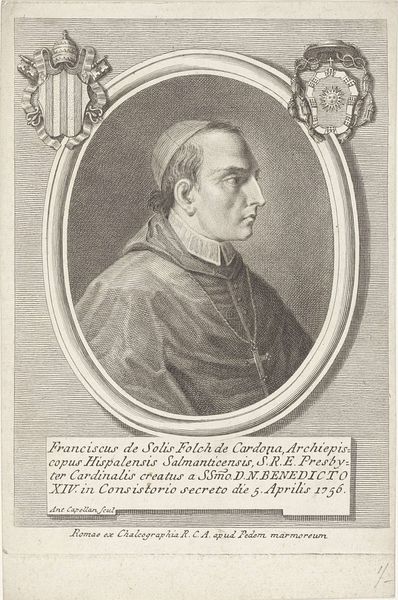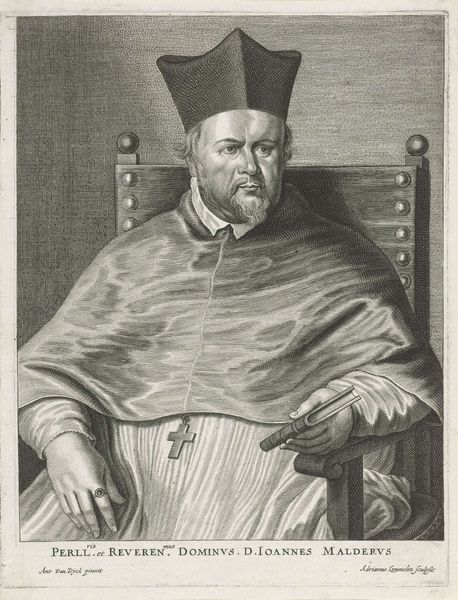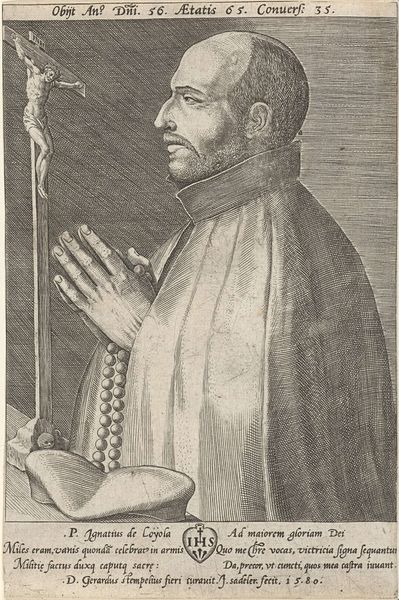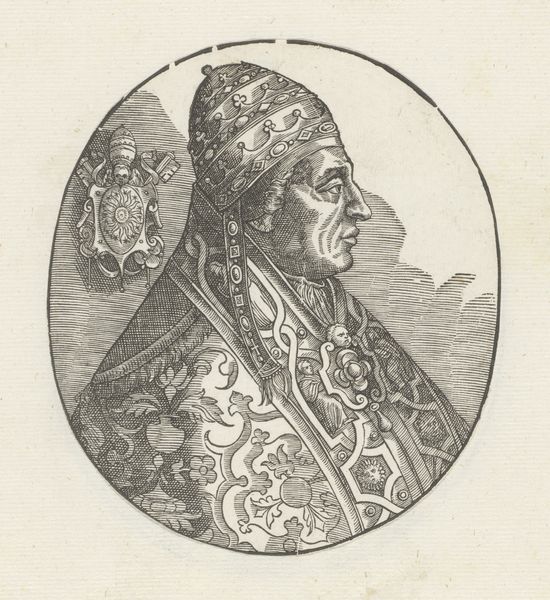
drawing, pencil
#
portrait
#
drawing
#
head
#
portrait image
#
portrait
#
black and white format
#
charcoal drawing
#
male portrait
#
portrait reference
#
male-portraits
#
black and white
#
pencil
#
portrait drawing
#
facial portrait
#
forehead
#
realism
#
digital portrait
Copyright: Public domain
Curator: The artwork presented here is titled “Portraits” by Thomas Eakins. It appears to be a pencil and charcoal drawing. The stark black and white tones lend a certain gravitas. What’s your initial take? Editor: Well, looking at this portrait, my immediate reaction is of controlled power, almost constrained. The man's gaze is level, intelligent behind those glasses, but the high collar and formal religious garb, coupled with that rather severe hat, give off an air of...institutional authority. It raises questions about the subject’s role in power structures. Curator: Absolutely. The materials themselves – pencil and charcoal – speak to a certain accessibility, despite the man’s position. Pencil, readily available, a medium of sketches and studies, yet here, it's used to create a formal portrait. How does the use of a relatively common medium challenge notions of traditional portraiture, which often involved oils and a more elevated process? Editor: I agree; the medium itself could be a subtle commentary on accessibility or even the artist's social awareness. Eakins, known for his realism, seems to strip away romanticism to present an honest, albeit formal, depiction. Considering Eakins’ era and social context, what narrative might the portrait subtly push regarding social and religious status? Curator: We know Eakins’ commitment to depicting what he saw truthfully; how would you then interpret the seemingly detached expression? Is it indicative of anything relating to issues of personal and collective identity in relation to religion? Editor: Perhaps. It reads to me as a deliberate act of self-presentation within the constraints of his role. His glasses are a visual marker of intellect and, perhaps, access to knowledge. This might also speak to evolving notions of identity and the individual’s position in society and religious spaces. Curator: Do you feel the work then uses the simplicity of its medium to challenge societal assumptions about both artistry and social class? Editor: Yes, absolutely. The rawness of charcoal and pencil makes it intensely direct. It resists the gilded trappings often associated with portraits of authority, offering instead a seemingly unvarnished representation, which can in itself be a commentary. Curator: It’s interesting how an ostensibly straightforward portrait drawing can prompt us to consider these tensions of medium, subject, and social message. Editor: Precisely! This piece certainly invites us to look beyond the surface of the image and consider its nuanced relationship to broader societal dynamics.
Comments
No comments
Be the first to comment and join the conversation on the ultimate creative platform.

